1. Quick Take by Traveler Type
Photographers: Late September to mid-October delivers saturated foliage and low-angle light. Beach-and-boat lovers: July–August offer the warmest seas and the most tour departures. Hikers seeking solitude: May–June and early November have emptier trails but variable weather. Families with school calendars: Late June and late August balance services with slightly lighter crowds than prime July weekends.
1.1 Why timing matters on the Downeast coast
Acadia’s weather swings quickly: ocean fog can roll in minutes after sunshine. Services, shuttles, and some roads operate seasonally, and wildlife moments (like seabird activity or leaf color) are highly time-dependent. Choosing the best time to visit Acadia National Park shapes everything from lodging costs to which trails feel safe and enjoyable.
1.2 The role of daylight
Summer provides long hiking windows and late golden hours; fall trims daylight but adds drama; winter’s short days favor a slower, cozy pace in Bar Harbor and nearby villages.
2. Spring: Shoulder Season & Quiet Trails
From April into early June, granite ridgelines thaw and carriage roads reopen as conditions allow. You’ll find cool mornings, patchy fog, and an occasional drizzle that makes pine forests smell rich and the rocks photograph beautifully.
2.1 Pros
Lower lodging rates than peak summer, easier dinner reservations, and peaceful hikes on routes like Gorham Mountain or the Ocean Path. Wildflowers and fresh greens brighten Jordan Pond and Sieur de Monts.
2.2 Cons
Water is cold for swimming, and some services may still be ramping up. In late May to early June, blackflies and mosquitoes can be active at dusk—bring long sleeves and repellent.
2.3 Who will love it
Photographers who embrace moody light, hikers who value uncrowded viewpoints, and travelers building a flexible itinerary around shifting weather windows.
3. Summer: Peak Season, Full Services, Ocean Days
July and August are the classic time to visit Acadia National Park: warmest air and water temperatures, reliable park shuttles, plentiful ranger programs, and the widest selection of boat tours and kayak rentals.
3.1 Pros
Everything’s open, from popovers at Jordan Pond House to ferry connections and sunset cruises. Trails like Beehive and Bubble Rock buzz with energy, and evening light on Sand Beach can be spectacular.
3.2 Cons
Expect higher hotel rates and busier parking lots—especially on blue-sky weekends. Midday heat on exposed granite can surprise visitors, and popular summits may require early starts.
3.3 Crowd-savvy tactics
Start hikes at dawn, plan tide-timed coastal stops in the late afternoon, and slot scenic drives for golden hour. Midweek stays help, as does building in a boat day when trailheads feel full.
4. Fall: Foliage, Crisp Air, Iconic Views
Late September to mid-October is the best time to visit Acadia National Park for color lovers. Maples and birches ignite across Mount Desert Island, reflecting in still ponds while the ocean stays relatively mild.
4.1 Pros
Cooler hiking temps, fewer bugs, and crystalline air for long-view panoramas from Cadillac, Penobscot, or Acadia Mountain. Apple orchards and coastal harvest menus add seasonal flavor.
4.2 Cons
Weekends can be very popular during peak color, and daylight hours shorten. Pack warm layers for sunrise missions and windy ridgelines.
4.3 Best experiences
Sunset from the Bubbles looking toward Jordan Pond, carriage-road cycling under golden canopies, and coastal walks where red blueberry barrens frame cobalt seas.
5. Winter: Quiet Beauty & Snowy Coastlines
From late November through March, Acadia becomes a study in granite and snow. Many travelers come for cross-country skiing on carriage roads, crisp coastal hikes, and wildlife tracking after fresh snowfall.
5.1 Pros
Minimal crowds, dramatic seascapes, and budget-friendlier stays. Clear nights can be ideal for stargazing over frozen coves.
5.2 Cons
Some park roads close seasonally, and storms can affect conditions. Restaurants and shops keep reduced hours. Build flexibility into your plan and watch marine forecasts.
5.3 Safety first
Use traction on icy trails, layer intelligently, and carry hot drinks. Coastal ledges can be slick—keep a conservative buffer from wave spray.
6. Month-by-Month Crowd & Price Calendar
April: Reawakening; good deals; variable trail conditions. May: Flowers and cooler air; growing services. June: Long days, rising visitation; plan early starts. July: Peak demand; book lodging well ahead. August: Warm water and festival energy; highest prices. September: Sweet spot after Labor Day; stable weather. Early October: Foliage highs and weekend popularity. Late October: Quieter, chilly nights. November–March: Value season with serene scenery.
6.1 How to stretch your budget
Target midweek arrivals, pair a couple of nights in Bar Harbor with a night in Southwest Harbor or Northeast Harbor, and consider spring or late fall for boutique-hotel value.
7. Weather & Packing Tips for the Coast of Maine
Coastal Maine weather pivots quickly—pack a warm layer even in August and a waterproof shell year-round. Granite reflects sunlight; sunscreen is essential, as are grippy shoes for polished rock and roots.
7.1 Smart layers
Base layer that wicks, an insulating mid-layer (fleece or light down), and a breathable rain shell. In shoulder seasons, gloves and a beanie make sunrise comfortable.
7.2 Trail essentials
Map or downloaded offline app, headlamp for sunrise/sunset hikes, 2–3 liters of water on longer ridges, and snacks that won’t crumble in a daypack.
8. Wildlife, Tides & Bugs: What to Expect
Seabirds, harbor seals, and porpoises are common sights on boat tours in late spring through early fall. Tide timing adds drama to coastal features; plan visits around changing water levels for sound and spray.
8.1 Dealing with insects
In late spring and early summer, dusk hikes can bring mosquitoes and blackflies in forested areas—long sleeves and repellent keep it a non-issue.
8.2 Leave no trace
Stay on bedrock and established paths to protect fragile mosses and lichen; pack out everything and respect tidal habitats.
9. Sunrise on Cadillac & Essential Logistics
Cadillac Mountain sunrise is a marquee experience with limited parking. In the heart of the season, vehicle access can require advance planning, so set alarms, check current park guidance, and consider a pre-dawn shuttle or hike if you prefer a car-free approach.
9.1 Getting around without parking stress
Seasonal island buses make a car-light trip easy. Pair bus routes with loop hikes so you don’t backtrack to crowded lots. Early breakfasts and late lunches also dodge peak dining times.
9.2 Safety on ladders and iron-rung trails
Popular routes like Beehive and Precipice include exposure. Choose them in dry weather, avoid if you’re uncomfortable with heights, and opt for family-friendly alternatives such as Ship Harbor or Wonderland.
10. Real Trip Story: A Perfect 48 Hours
On a cool October Friday, Maya and Devon reached Bar Harbor at dusk, grabbed chowder, and set alarms for 4:45 a.m. The next morning, Cadillac’s horizon blushed from violet to copper while loons called somewhere below. After coffee and popovers near Jordan Pond, they cycled carriage roads under a canopy of gold, then wandered Ocean Path at low tide, finding tide pools like tiny galaxies. Sunday brought a foggy stroll to Ship Harbor—quiet, meditative, and exactly the Maine they’d hoped for. Their verdict: fall made Acadia feel both epic and intimate.
10.1 Why their timing worked
They traded summer’s beach weather for foliage, crisp air, and easy parking. Shorter days meant earlier sunsets and cozy dinners without weeks-ahead reservations.
11. Booking Windows & Expert Help
Lodging on Mount Desert Island fills early for July, August, and peak foliage weekends. Reserve months ahead if you want specific views or boutique rooms, and consider nearby towns for quieter nights. For trip designs that match your season—family hiking plans, photo-driven itineraries, or car-free logistics—Refined Travel can curate stays and experiences aligned with when you choose to come.
11.1 Bringing it all together
The best time to visit Acadia National Park depends on your travel personality. Whether that’s summer’s sea-spray energy, October’s color therapy, or winter’s quiet, plan with the season in mind, pack smart, and give yourself permission to slow down between ridges and rocky coves.

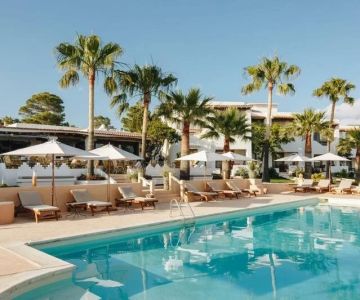

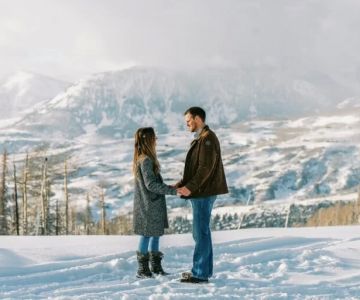

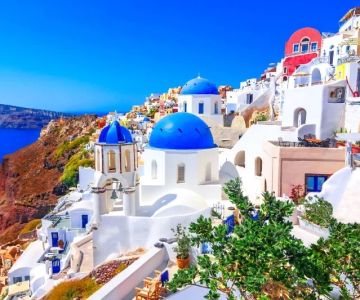
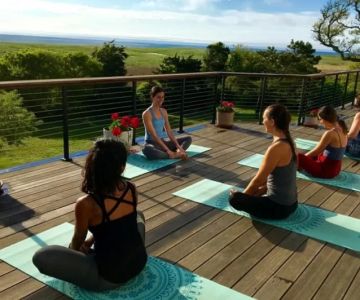
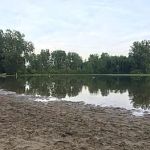 Hidden Lake Resort4.0 (72 reviews)
Hidden Lake Resort4.0 (72 reviews)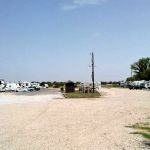 Avondale RV Park 24.0 (67 reviews)
Avondale RV Park 24.0 (67 reviews) Abbey Court2.0 (52 reviews)
Abbey Court2.0 (52 reviews)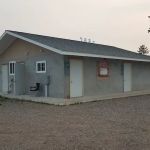 Chocolay River RV & Campgrounds4.0 (86 reviews)
Chocolay River RV & Campgrounds4.0 (86 reviews)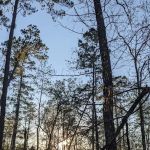 Indian Springs Campground4.0 (67 reviews)
Indian Springs Campground4.0 (67 reviews)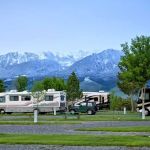 Mustang RV Park5.0 (1 reviews)
Mustang RV Park5.0 (1 reviews)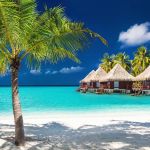 Exclusive Travel Packages for First-Class Travelers: A Guide to Luxury Vacations
Exclusive Travel Packages for First-Class Travelers: A Guide to Luxury Vacations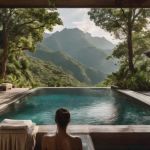 Refined Travel Experiences in Southeast Asia: Explore Luxury & Unique Destinations
Refined Travel Experiences in Southeast Asia: Explore Luxury & Unique Destinations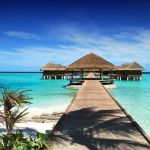 How to Make the Most of Luxury Vacation Deals: Expert Tips for Savvy Travelers
How to Make the Most of Luxury Vacation Deals: Expert Tips for Savvy Travelers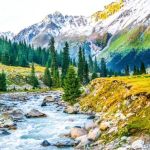 How to Enjoy a Refined Travel Experience in the Mountains
How to Enjoy a Refined Travel Experience in the Mountains Refined Travel Itineraries for Art and Culture Lovers: Explore the World of Art and History
Refined Travel Itineraries for Art and Culture Lovers: Explore the World of Art and History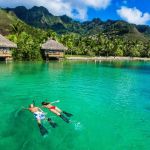 Most Luxurious Destinations for Honeymooners: Top Spots for Romance and Luxury
Most Luxurious Destinations for Honeymooners: Top Spots for Romance and Luxury